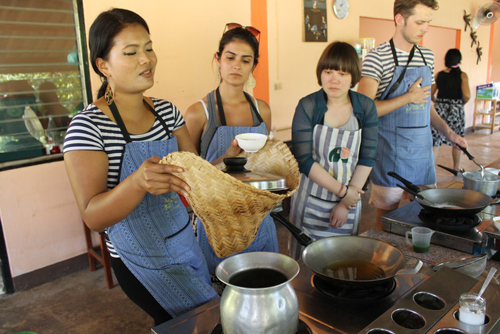From Chinese tourists in Kidlington, to Brits it in Rio, everyone wants an authentic experience of lifestyles, food and culture.
It has been a bumper year for tourists for the small village of Kidlington in Oxfordshire, England. Those on national, international and social media were left scratching their heads, when an unexpected flood of Chinese tourists descended on the town. Groups of curious travellers could be seen roaming down residential streets, taking pictures with locals and even entering gardens.
A survey by the BBC revealed that these tourists were searching for “the true sense” of the UK. It seems that Chinese travel agencies, driven by consumer pressure, have added towns such as Kidlington to the itinerary, in an attempt to give tourists a taste of a traditional English village.
The quest for authenticity
China has become the biggest source of tourism in the world, and a growing number of Chinese tourists have been setting out to experience overseas countries. These travellers are no longer satisfied with superficial tourist activities – instead, they’re searching for an in-depth understanding of their destinations. In other words, they want to experience authentic local lifestyles, customs and culture.
Research has shown that Chinese tourists are driven by a desire to see what is “normal” at the destinations they travel to. This is one reason why more Chinese tourists are organising and travelling independently as opposed to being solely reliant on a travel agent or prepackaged holidays.
Yet this trend is not just specific to Chinese travellers: a 2016 Expedia study found that millennials from all over the world prioritise authenticity in their travel experience. What’s more, they have the power to pursue it – thanks to sites such as Skyscanner and Last Minute, travellers have the means to design a personalised itinerary, according to their interests, while companies such as Airbnb and Home Stay allow them to interact with locals at their destinations.
Disneyfication
Yet it’s still not exactly clear what makes an experience “authentic”. Authenticity is generally associated with something that is genuine, real, or true. This could mean simple, rural or natural experiences, like those offered by travel schemes such as Workaway or World Wide Opportunities on Organic Farms. Or it could be embodied in gritty, even difficult experiences – from slum tourism in Rio de Janiero, to homeless tourism in Prague and toxic tourism.
But authenticity is a pretty complex idea – what one person sees as an authentic experience, another may view as a sham. And if a person believes they are getting an authentic experience, it may not matter whether it’s spontaneous or staged. So, it seems that authenticity is constructed by a person’s interaction with, and interpretation of, the social and physical environment.
One can argue that an “authentic tourism experience” is a contradiction in terms. When places or experiences are discovered and populated by tourists, they ultimately change by the demands of tourists themselves and the economic opportunity this presents to providers. The presence of tourism can lead to “Disneyfication” – when a place becomes contrived in order to sell itself to consumers – and can expose local people and cultures to manipulation and exploitation. And so, the tourists’ search for authenticity continues.
Co-creation
It doesn’t have to be this way, though: the strategy of “co-creation” offers an attractive alternative within the search for authenticity. Under this strategy, value is created as tourists help to construct their own experience by engaging with each other, the tourism provider and also local people.
Tourism operators in many countries are now providing different types of tourism products, which co-create an authentic tourism experience. For instance, in Australia, tourists can participate in indigenous tourism activities such as traditional festivals, dances and guided tours, together with Aboriginal Australians. Another example is the cookery classes offered in South-East Asian countries such as Thailand, Vietnam and Indonesia. Here, tourists have the opportunity to cook with a local chef using local ingredients, recipes and cooking techniques.

Tourism campaigns are also finding use for this strategy. Hong Kong’s “I never knew” campaign invites locals and previous visitors to share their stories about Hong Kong, with the ambition to co-create authentic experiences by allowing tourists to tap into local knowledge, rather than focusing on the major tourism offerings.
Authenticity is becoming an increasingly valuable commodity in the tourism industry, as more and more tourists seek to immerse themselves in local cultures and environments. What makes for an authentic experience will differ from one person to the next – from eating at a local restaurant, to visiting war-torn conflict zones. Tourism providers may be feeling the pressure to come up with more and more original “authentic” experiences. But it’s actually an opportunity – now providers can to give people the power to co-construct their own authenticity … just like those Chinese tourists in Kidlington.


